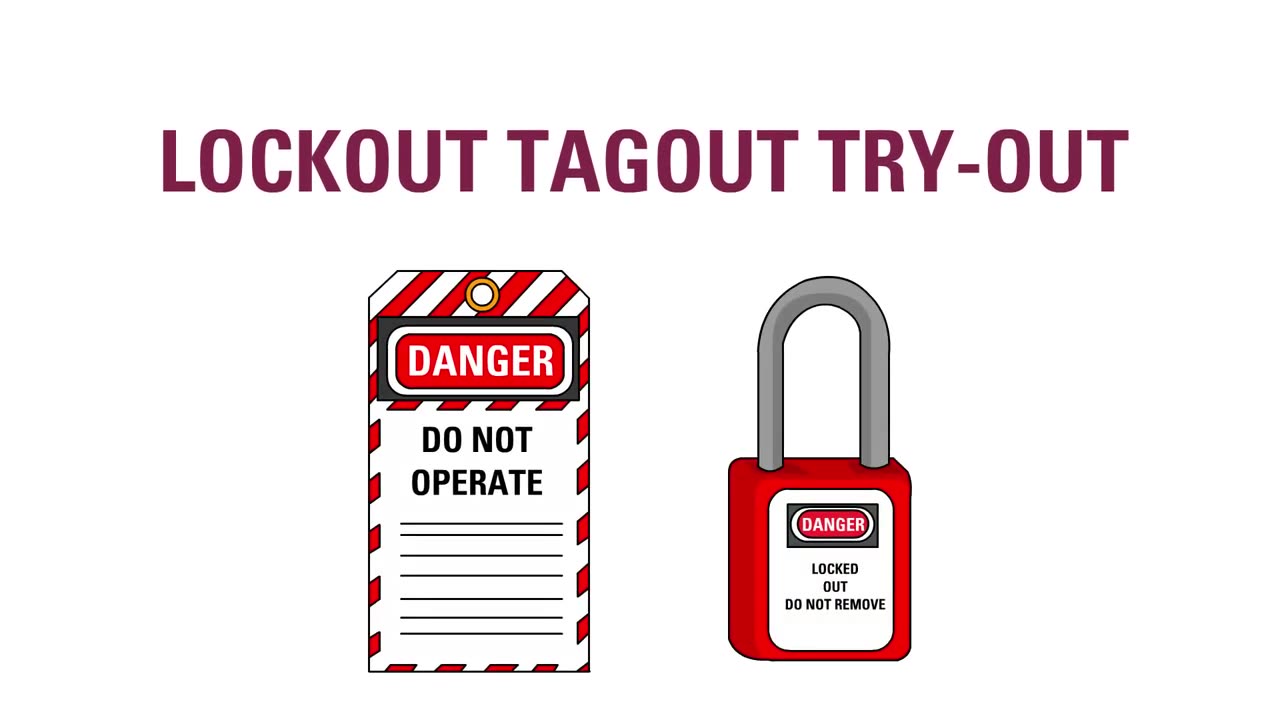Premium Only Content

Lockout Tagout - An introduction to the control of hazardous energy.
### **Introduction to Lockout/Tagout (LOTO): Control of Hazardous Energy**
**Objective:** Understand the principles and importance of Lockout/Tagout (LOTO) to control hazardous energy and prevent workplace accidents.
---
### **1. What is Lockout/Tagout (LOTO)?**
Lockout/Tagout is a safety procedure used to ensure that machines and equipment are properly shut off and cannot be started up again before maintenance or servicing is completed. It protects workers from unexpected energization, start-up, or the release of hazardous energy.
**Hazardous Energy Types:**
- Electrical (e.g., live wires, energized circuits)
- Mechanical (e.g., moving parts, springs)
- Hydraulic (e.g., pressurized systems)
- Pneumatic (e.g., compressed air)
- Thermal (e.g., extreme temperatures)
- Chemical (e.g., stored chemical reactions or pressure)
---
### **2. Why is LOTO Important?**
Failure to control hazardous energy can lead to serious injuries, such as:
- Electric shock
- Burns
- Crushing injuries
- Amputations
- Fatalities
OSHA estimates that proper LOTO procedures prevent about 120 fatalities and 50,000 injuries annually in the U.S.
---
### **3. LOTO Process**
#### **A. Preparation**
- **Identify Hazardous Energy Sources:** Determine all potential energy sources of the equipment.
- **Notify Affected Employees:** Inform all personnel about the planned shutdown and LOTO application.
#### **B. Shutdown**
- **Turn Off Equipment:** Follow the manufacturer's instructions to shut down machinery safely.
- **Isolate Energy Sources:** Disconnect all energy sources (e.g., turn off power switches, close valves).
#### **C. Lockout**
- Apply **Lockout Devices** to energy-isolating devices to prevent re-energization. Each lock should have one key and only the worker who applied it should keep the key.
#### **D. Tagout**
- Attach **Tagout Devices** to indicate why the equipment is locked out. Tags must include:
- The name of the worker performing the lockout.
- The date of lockout.
- A warning message (e.g., "Do Not Operate").
#### **E. Energy Dissipation**
- Release or block any stored energy:
- Drain pressurized systems.
- Secure moving parts with blocks or pins.
- Test for Zero Energy: Use appropriate instruments to verify no residual energy remains.
#### **F. Verification**
- Double-check that all steps have been performed correctly before beginning work.
---
### **4. Restoring Equipment to Service**
When maintenance is complete:
1. Remove tools and reinstall safety guards.
2. Ensure all employees are clear of the equipment.
3. Remove LOTO devices:
- Only the person who applied the lock/tag can remove it.
- Verify that the equipment is operationally safe.
4. Notify affected employees that maintenance is complete.
---
### **5. LOTO Best Practices**
- **One Worker, One Lock:** Each worker must have their own lock and key for personal safety.
- **Training:** Provide LOTO training for authorized, affected, and other employees.
- **Regular Inspections:** Periodically review and audit LOTO procedures to ensure compliance.
- **Never Bypass LOTO:** Never attempt to override or bypass lockout/tagout procedures for convenience.
---
### **6. Regulatory Standards**
In the U.S., LOTO is governed by the **Occupational Safety and Health Administration (OSHA)** under Standard 29 CFR 1910.147, “The Control of Hazardous Energy.”
- Employers are required to establish and enforce a LOTO program and provide employee training.
---
### **Conclusion**
Lockout/Tagout is a critical safety process to protect workers from hazardous energy during equipment servicing. Strict adherence to LOTO procedures not only ensures compliance but also saves lives.
**Remember: If it’s not locked out, it’s not safe to work on!**
-
 4:11:49
4:11:49
Nerdrotic
5 hours ago $12.34 earnedThe Best and Worst of 2024! Sony Blames Fans | Batman DELAYED | Nosferatu! |Friday Night Tights 334
67.8K23 -

Dr Disrespect
9 hours ago🔴LIVE - DR DISRESPECT - WARZONE - SHOTTY BOYS ATTACK
155K23 -
 1:30:23
1:30:23
Twins Pod
8 hours agoHe Went From MARCHING With BLM To Shaking Hands With TRUMP! | Twins Pod - Episode 45 - Amir Odom
57.9K18 -
 1:02:30
1:02:30
Exploring With Nug
9 hours ago $0.50 earned2 Duck Hunters Missing After Kayak Capsizes!
6.56K -
 46:48
46:48
Mally_Mouse
3 hours agoLet's Hang!! -- Opening Christmas gifts from YOU!
23.9K -
 44:55
44:55
Athlete & Artist Show
20 days ago $1.58 earnedNHL 4 Nations Snubs, Was Hawk Tuah Coin A Scam?
32.3K -
 33:47
33:47
Stephen Gardner
8 hours ago🔥Pentagon Whistleblower UNLEASHES on Biden and Obama!
88.9K145 -
 2:20:30
2:20:30
The Dilley Show
10 hours ago $23.94 earnedRoger Stone in Studio plus Q&A Friday! w/Author Brenden Dilley 12/27/2024
75.8K16 -
 1:57:02
1:57:02
The Charlie Kirk Show
8 hours agoThe Great H-1B Battle + AMA | Lomez | 12.27.24
155K207 -
 11:39
11:39
Russell Brand
1 day agoWhat You're Not Being Told About The Syrian War
161K238